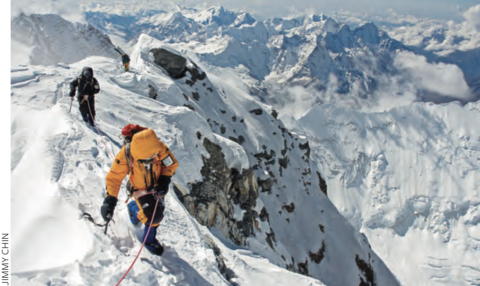
Like an irresistible drug, racking up new descents keeps ski mountaineers looking for the highest high. Welcome to the brave new world of 8,000 meters and up. —Part 2
By Jay Cowan
Standing on the top of an 8,000-meter peak in the Himalaya or Karakoram is one of the great achievements in climbing. You are on hallowed ground that few on earth will ever touch. You’ve spent days or more in the “death zone” above 26,000 feet where your body is deteriorating just by being there. The sheer physical exertion of chiseling your way upward—foot by punishing foot, over rock and ice and cliffs in temperatures only fit for yetis and lichens—is fully extreme. And on top, having just expended this massive amount of energy and willpower, you still need to have something left in the tank … because now you have to get down.
It may seem like a skiing descent would at least be easier and quicker than on foot, but that’s not always the case. Quicker, yes, but dangerously so. And those who ski above 8,000 meters, who are all athletic beasts, say they are the hardest turns they’ve made in their lives, even on decent snow, which it rarely is. Just keeping your concentration and staying aware and in the moment is difficult when you’re fighting an oxygen-deprived brain and hemoglobin shortages in your blood. And it’s especially sketchy on a 50-degree pitch slathered with wind-rippled ice where one slip can be fatal and each turn requires super-human effort...
